What Is 'Dune' About? 'Dune' Characters, Symbols, Terminology, and Meaning Explained
With this complete guide to Dune characters and terminology, you can appreciate and analyze every layer of Dune, whether you just saw it or are about to!
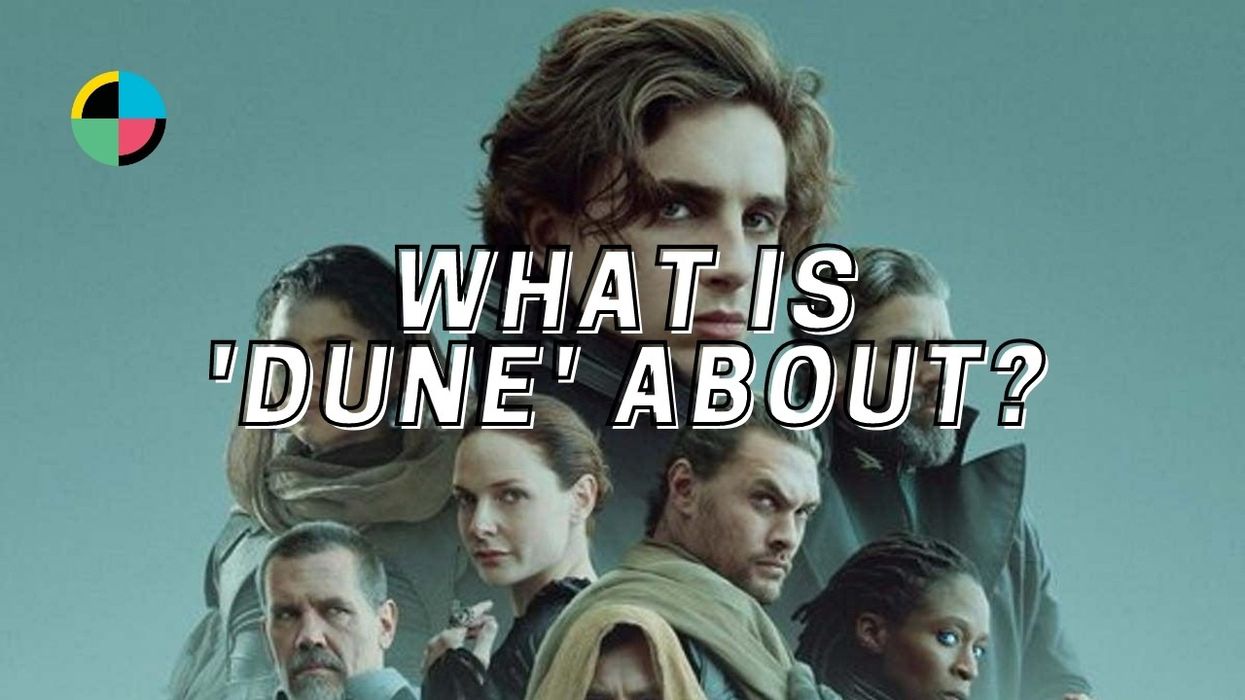
Few works of fiction rise to the levels Dune has. Its imprint on our culture and collective psyche are massive, even for those of us who aren’t aware.
How does that work?
Whether it’s through Star Wars, Game of Thrones, or global warming... you’ve experienced some aspects of Dune. It’s prophetic and prevalent.
So, is Dune worth reading?
Yes. Absolutely. There are few pieces of work as massive and influential as Frank Herbert’s Dune.
But there is a problem...
You might not have time to read a 650-page sci-fi epic.
The good news is, we’re here to break it all down for you. But there is another bonus.
Understanding Dune and Dune characters will make you a better writer and filmmaker.
How?
You will gain an added level of story understanding and mastery. Because we’re not just here to find out what the movie Dune is about, or what the book Dune is about.
We’re here to become better filmmakers. How can understanding Dune and its film adaptation do that?
What is the one thing that executives and festivals and script readers and gatekeepers look for in a story? They look for POV. Or, point of view. But it doesn’t end there. They also need compelling drama, action, and a Swiss watch of a hero’s quest. To stand out in a super-crowded field, you can’t just execute the craft, and you can’t just have a message and POV.
Get you a story that can do both.
Dune is that kind of story. And that’s why we’re studying it.
It’s a blueprint that countless stories utilize. It’s also a treatise on empires, economics, religion, and ecology.
Like its main character, the Muad'Dib himself, Dune looks backward and forward all at the same time.
It’s about a prophet... but it is itself prophetic.
What is so great about Dune? It’s that after you know the plot, see the movies, and read the book… you’ll still have questions.
So let’s start answering some of them...
Table of Contents
What is Dune about?
Dune follows the growth and evolution of a gifted young nobleman, Paul Atreides, when his father takes on ruling the planet, Arrakis (or Dune), where the most valuable resource in the known universe is produced—the spice.
As Paul’s special powers develop, his father’s grip on Arrakis loosens, with enemies closing in on all sides. There are plots within plots, “plans within plans,” and we learn alongside Paul how to navigate the complex feudal system of the galaxy’s politics, as well as traverse the barren unlivable desert planet itself.
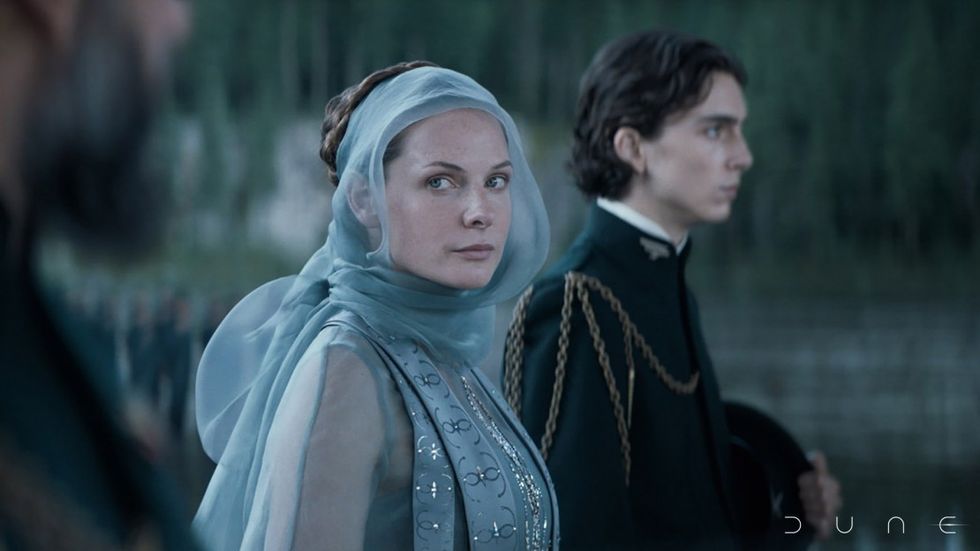
The Dune book plot goes on to see Paul through years on Arrakis, while the Dune movie plot (called Dune Part 1) ends a little less than halfway through the Dune book plot.
The end of this article contains a complete Dune summary and Dune book summary, but if you wish to avoid spoilers, you can follow through here for a spoiler-free analysis and breakdown of all characters and terminology.
What is the movie Dune about?
In most ways, the book and movies follow the same storyline. Though, given the expanse of the books, some of the movies and TV series take their own route to the same end, incorporating different aspects sooner or later than others.
If you’ve experienced David Lynch’s Dune from 1984, you think of Dune as an 80’s movie, limited by the scope of the time, and by the creative differences between a young Lynch and Dino DeLaurentiis, the producer.
The 1980s Dune movie is not really an embodiment of Herbert’s story. It takes some liberties, rearranges the order of events, and utilizes information from the book’s sequels early on. It also takes a completely different approach to the exposition and building tension, and other tools critical to great storytelling.
Denis Villeneuve's Dune (2021) is part one of a two-part story. As such, he doesn’t have to cram everything into one film, the way Lynch tried to. He is afforded time to be more faithful, allowing the story to unfold the way Herbert did originally.
But the biggest problem that faces any adaptation of Dune is a problem that faces any storyteller. Something you struggle with everything you write.
Exposition.
Making exposition dynamic is a secret sauce that makes a plot hum like a finely tuned engine. A great plot is perfectly intertwined with characters.
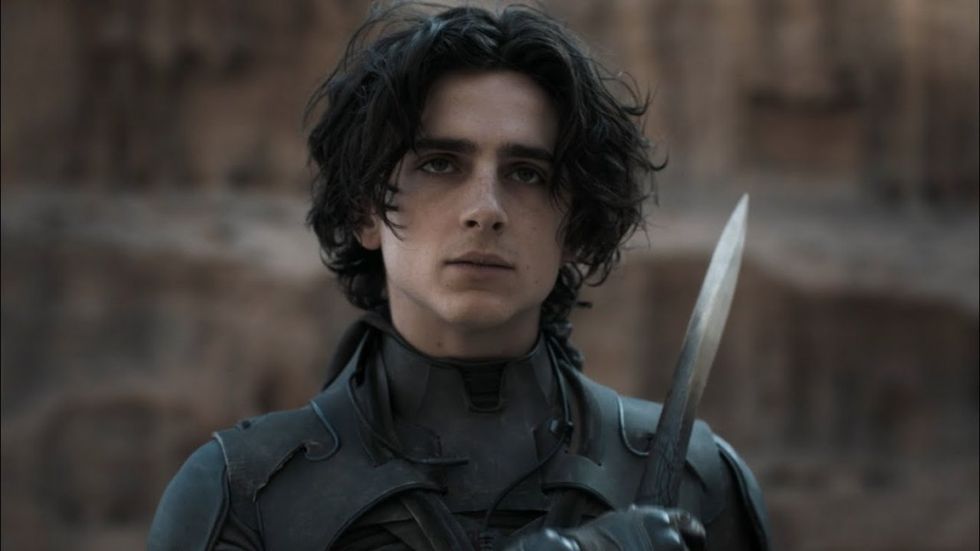
Dune characters
You need a Dune character list, because otherwise, you’d have a pretty hard time keeping track of everyone.
There are a lot of names, and Dune names are not exactly familiar or easy to read or say. And in some cases, people have multiple names. For the most part, Dune book characters are the same as Dune movie characters. We will notate any important differences.
Let’s start with Dune's main character...
Paul Atreides
Played by Timothée Chalamet, Paul Atreides appears to be the protagonist in Dune. Born to Duke Leto Atreides and Lady Jessica, Paul is 15 years old when the story begins. In Dune, Paul Atreides grows up before our eyes. Skills he has been training all his life begin to awaken, and his ability to predict the future through dreams haunts him.
When it comes to plot and exposition, Paul is a perfect character.
Why?
He begins the story about to embark on an adventure to a strange land, which means he can be learning about this land... and we learn with him.
It doesn’t end there. He’s also deep into training various disciplines. Lessons from his mother, his combat teachers, and other special tutors we’ll discuss later in the Dune character list.
All these skills he’s learned are reflective of the major powers at work in the story, the key forces conspiring to create the plot and backstory. We learn about them from Paul’s learning.
Another reason this works so well? It’s perfect for planting skills Paul will need later. This is how the story aligns the protagonist with the audience almost immediately.
As for Paul’s special powers... it’s all earned.
There isn’t a cliche "training montage" in Dune. The story is the training montage, with lessons and challenges for Paul and his various skills along the way. What he becomes by the end is a direct and earned result of what we’ve gone through with him.
We’re not spoiling anything to let you know that Paul also goes by another name (or two, or three, or…).
Muad'Dib
Paul Muad Dib, or Muad'Dib, is the name Paul Atreides chooses for himself once he becomes a part of the Arrakis desert, and a member of the Fremen culture.
But what is Muad'Dib? What does it mean?
Paul chooses the name because of a mouse, called the Muad'Dib, that he sees surviving and thriving in the harsh unlivable conditions.
Muad’Dib’s Arabic meaning is “he who disciplines/teachers manners.” This doesn’t necessarily apply to Paul Maud’Dib in the course of the story, the Dune Maud'Dib meaning seems to be closer to the invented intent within the story; the Maud'Dib mouse is a survivor and adapter.
Before he’s known as Muad'Dib, Paul is known or referred to by another unfamiliar Dune name—

Kwisatz Haderach
In Dune, Kwisatz Haderach is a kind of messiah or chosen one, a supreme being prophesied by a society of religions mystic witches referred to as the Bene Gesserit (more on them later).
If you’re curious about the Kwisatz Haderch pronunciation… watch the movies! I’m sure everyone who reads it has their own ideas.
There is a question from the moment the story begins as it if Paul Atreides is in fact the Kwisatz Haderach.
When we first meet him, he is undergoing a Bene Gesserit test to see if he could be “the one.”
Are you thinking about The Matrix now? Yet another major sci-fi work heavily influenced by Dune.
While from a certain angle, Paul Muad'Dib follows a classic Campbell-style hero’s quest, much like a Luke Skywalker or a Frodo Baggins. Dune carefully and consistently plants something much more complex.
You could actually see Paul’s journey as the opposite of heroic. Understanding Dune might be understanding the phrase Herbert himself wrote: “Arrakis is a planet afflicted by a hero.”
What the hell does that mean? We’ll get into that later when we talk about what Dune is about on a deeper level.
For now, one genius aspect of the Paul Atreides Maud'Dib character is how well he is used for exposition.
The next character on our list is an example of another phenomenal writing tool. Which one?
Ironic tension.
What’s that?
Look no further than North by Northwest, or countless "bomb under the table" Quentin Tarantino scenes to see how well tension can be drawn out over a long sequence when the audience knows about things the characters don’t.
That’s what Frank Herbert did with...
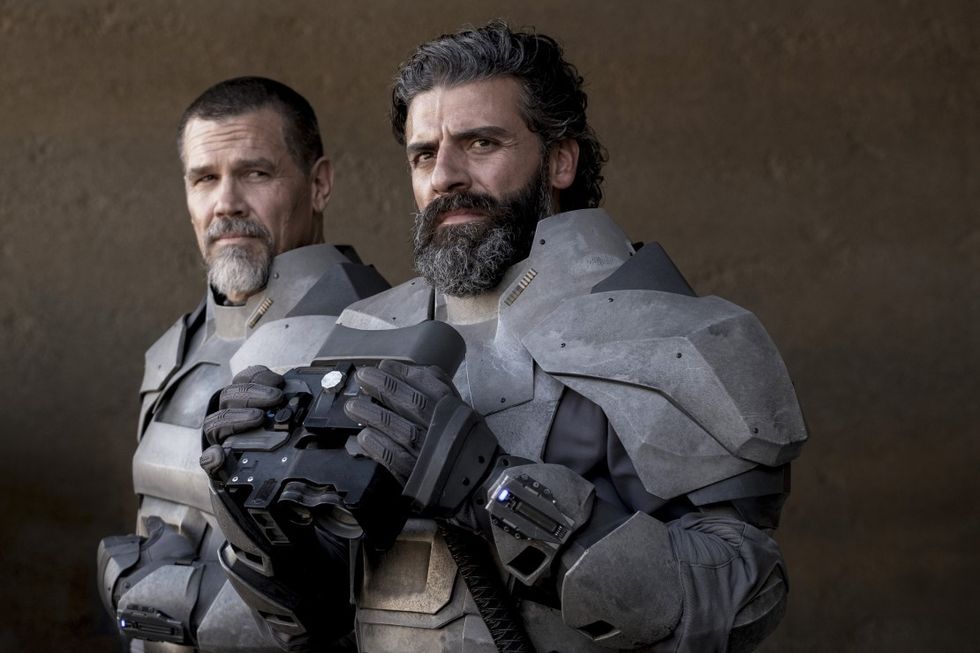
Leto Atreides
Played by Oscar Isaac, Duke Atreides, or Duke Leto, is the head of House Atreides and ruler of Caladan when Dune begins. He is a noble leader, taking on what he deems a major galactic responsibility in uprooting his family and legions to manage and rule over the desert planet Arrakis.
Duke Leto is Paul Atreides’ father, and he intends to guide Paul to the kind of dutiful and loving leadership he and House Atreides embody.
Okay, cool...dSo what about that ironic tension we were promised?
It is known almost from the get-go that Duke Leto Atreides is walking into a trap on Arrakis, and his enemies are conspiring against him.
Here is where the most famous versions of Dune vary.
Villenueve’s Dune (2021) focuses on the events of the plot as they unfold.
Lynch attempted to dramatize a story device Herbert employed, which has the character of Princess Irulan writing forwards to each chapter, informing us via hindsight, how events would ultimately be viewed.
It’s challenging to skillfully introduce the audience to the information they need to know to create ironic tension without also confusing them on some level.
How much we know of the plot against Duke Leto varies in each version. But the fact remains, we know Duke Leto is in grave danger. Why?
Who would want to harm such a noble, strong, kind, and upstanding figure like Duke Leto Atreides?
Vladimir Harkonnen
Played by Stellan Skarsgard in Dune (2021), the Dune Baron Harkonnen is head of—you guessed it–House Harkonnen.
The Baron is a scheming wealthy ruler who has ruled Arrakis for a long time. He’s been the beneficiary of its valuable spice.
The opportunity for the Atreides to take control of Arrakis is a part of the larger plot allowing Vladimir Harkonnen to attempt to eliminate his family’s chief rival, with aid from the most powerful figure in the Dune galaxy, the Padishah Emperor (more on him later).
You could say House Harkonnen and House Atreides are a little bit like the Starks and the Lannisters. Rival powers in a massive galactic feudal system, ruled by an emperor, a space guild, and a massive corporation called CHOAM.
We’ll break CHOAM down later, don’t worry.
The Baron is massively overweight, moving by use of anti-grav suspenders. He’s a little bit like Jabba the Hutt. Or should I say, Jabba the Hutt is more than a little bit like him? So many things lift from Dune... and we’re barely scratching the surface.
You could say Vladimir Harkonnen is the chief antagonist in Dune, but he’s aided by others. His nephew Feyd Rautha Harkonnen is his heir apparent, though we do not see Feyd Rautha in Dune (2021), so expect him in part two. We don’t yet know who is playing Feyd in Dune but expect to learn more soon as part two is likely to begin casting and production.
Vladimir's other nephew is Rabban Harkonnen, played by Dave Bautista in Dune (2021). Rabban is a sort of a Sheriff of Nottingham with respects to Arrakis. Meaning what, exactly?
The primary dynamic between the Harkonnens and Arrakis is the exploitation of Arrakis for its valued resource.
The spice is everything to the universe of Dune and the power brokers (more on why later). There is a native people and culture there who live under the boot of Harkonnen misery.
House Atreides is, in theory, an answer to some of the problems the planet faces.
Here is a little secret about Dune. The real protagonist might not be Paul Maud'Dib Atreides at all. He might even be the antagonist. The real protagonist might be—
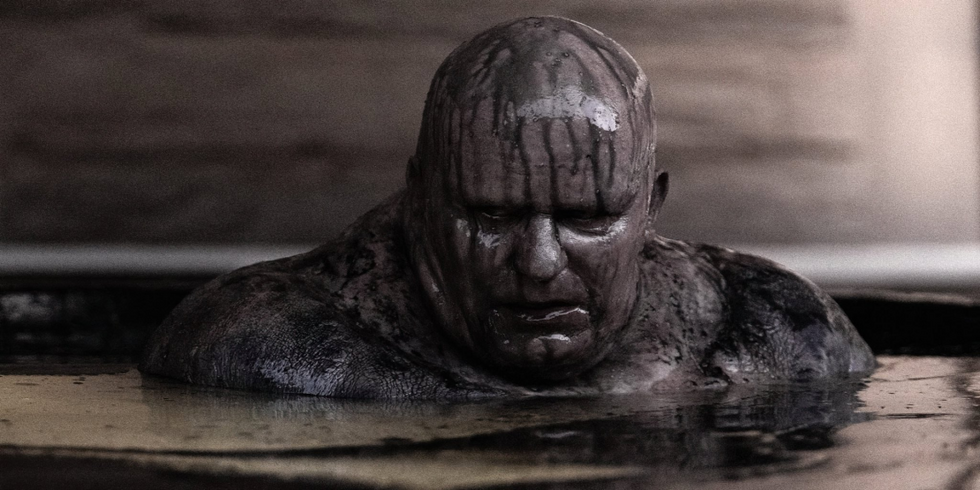
Arrakis
“Arrakis… Dune… Desert planet.”
Yes, you’ve heard of the idea of the location being a character. It’s a filmmaking credo. Dune is the name of the story, but it’s also another name for Arrakis.
In the case of Dune, it’s another classic story lesson exemplified by both the film and the book.
Arrakis is a character with a wish. A goal. A desire that arguably is what drives the plot. Arrakis wants to no longer be a desert planet. There is a dream for Arrakis to become something lush and green. Something alive and vibrant.
The characters in the world of Dune’s primary story are aware of this dream on various levels. It is a multigenerational dream.
In hundreds of years, maybe, if all goes right, the people of Arrakis could turn their hostile life-averse planet into something different. They are walking along that path with baby steps.
But there is an actual character who embodies that slow process.
Doctor Kynes
Dr. Liet Kynes is portrayed in Dune (2021) by Sharon Duncan-Brewster. This is a rare change between the book Dune and the 2021 film.
In the book, Liet Kynes is a male, but is swapped to female for the film. It’s unclear at this time as to why. In either case, it has no bearing on the plot in Dune part one. Dr. Kynes is Dune’s overseer of the transfer of power between House Harkonnen and House Atreides.
More importantly, Liet is wary of the new ruler’s intent for Dune. Why?
Because Liet is following in the footsteps of their father, who started Arrakis down the multi-generational path toward rebirth and life.
Liet’s father died pursuing the Arrakis dream, and the mantle came down to Liet, who is closely bonded to the local Fremen culture.
The Fremen, who we will get into later, are the indigenous population of Dune who have managed to eke out an existence in the barren landscape.
House Atreides seems to understand that allying with the Fremen, and Kynes, could lead to a better dynamic than the Harkonnens had there. Remember Arrakis is a planet “afflicted by a hero.” What could make this hero an affliction? It comes in the form of religion embodied in the story by the character—
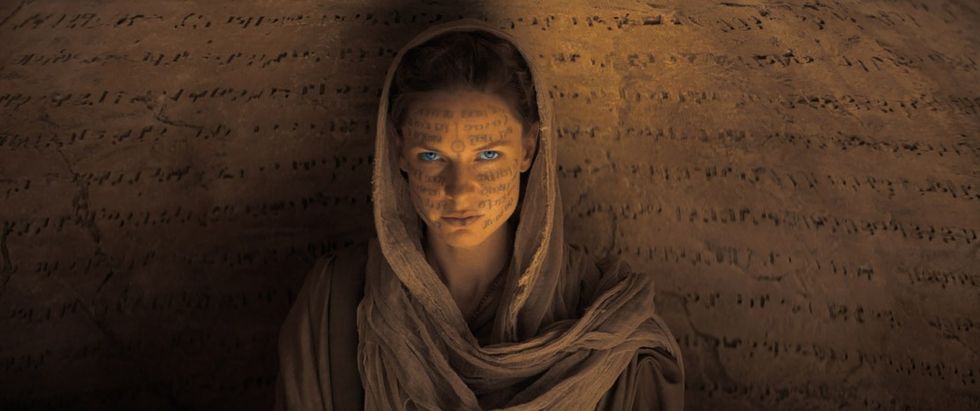
The Lady Jessica Atreides
Played by Rebecca Ferguson in Dune (2021), Lady Jessica is Paul Atreides' mother, Duke Leto’s concubine, and a Bene Gesserit "witch." We’ll get into what the Bene Gesserit are more later, but for now, they are an order of women with superpowers, not unlike the Jedi.
Jessica bore a son, Paul Atreides, against Bene Gesserit orders.
Yes, apparently they can choose what gender they give birth to. She didn’t just break the rules in giving birth to a male, but went even further against the order by giving Paul extensive Bene Gesserit training. Training explicitly not intended for men—unless the man in question is the Kwisatz Haderach.
To go deeper down the Star Wars rabbit hole, you can see how George Lucas was later lifting some of this for his Anakin Skywalker arc.
Of course, there is no Jar Jar Binks in Dune.
The lady Jessica is Dune’s first Bene Gesserit, and when she arrives with Paul in tow, the locals begin to believe in a religious prophecy that a Bene Gesserit and a boy would come to their world… the "Lisan al Gaib."
Sorry. Yes. Another name for Paul. And another complicated thread that you might even miss in your first viewing of Dune (2021).
The Lisan al Gaib is the term for the “voice from the outer world.” It is essentially a prophet/messiah figure to the Fremen culture on Dune/Arrakis.
But there is some twisted truth to why the people of Dune think Paul is the Lisan al Gaib.
It is only because the Bene Gesserit, in all their galactic meddling, have planted something they call a “missoinaria protectiva” on this world as well as others.
What the hell is the Missionaria Protectiva?
I’m glad you asked!
The Missionaria Protectiva is a tool the Bene Gesserit sisterhood employ whereby they planted seeds of massive superstition in various worlds, so any of their members could arrive and be safely worshipped and granted a kind of clemency.
For this reason, the arrival of the Lady Jessica on Dune is the beginning of a fulfillment of a false prophecy.
Which is a clue into the deeper truth of Dune.
But before we get to that… there are other characters and terms to discuss!
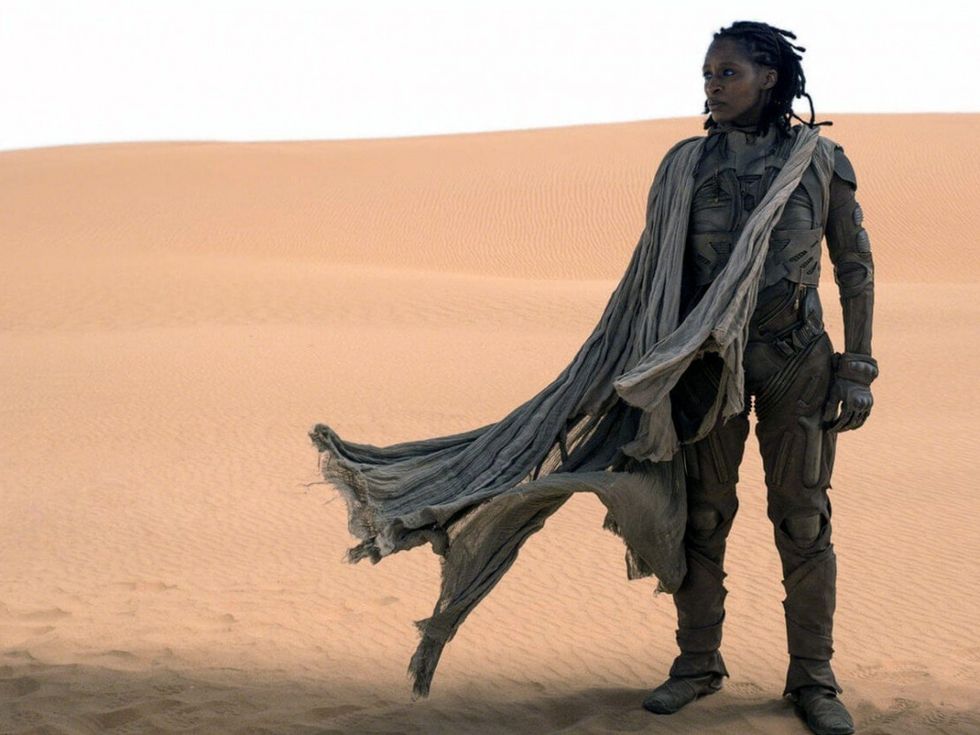
Supporting Dune Characters
There are many characters in Dune, but the genius is how they all fulfill such critical roles in the plot. None of them are without specific function to the greater story.
Thufir Hawat
Thufir Hawat is the Mentat and Master of Assassins for Duke Leto Atreides, and his father before him.
A mentat is a sort of human-computer, one trained from an early age to calculate odds and strategies.
Think of it as a precursor to Star Trek’s Mr. Spock, or Don Corleone’s consigliere.
Thufir is training Paul Atreides to become a Mentat. He’s advising Duke Leto, and he’s helping keep the family and house safe from military threats and traps.
Of course, the true threat is invisible from the inside.
Dr. Yueh
Dr. Wellington Yueh is the medical professional who cares for House Atreides, and he’s a trusted loyal member of the inner circle. But he’s also the subject of a bribe, and he’s the lynchpin of the plot against House Atreides.
In the novel, we are given extensive information about Yueh and his plan, how he is connected to the Harkonnens, and what he’s hoping to accomplish.
In the film version, we are allowed to see the events play out without prior knowledge as to his intentions and outcomes.
This choice shifts the focus of the drama from one of anticipation to one of surprise.
We won’t spoil it here, but it’s important to keep in mind that the rules of becoming a doctor in the world of Dune would have made it nearly impossible for anyone to suspect Dr. Yueh of conspiring against his House.
Where Yueh is a key into the trap against House Atreides, other major advisors to Duke Leto are a potential cause for why the House is being betrayed in the first place.
Duncan Idaho
Played by Jason Momoa in Dune (2021), Duncan Idaho is the swordmaster of House Atreides, one of the right-hand men of Duke Leto Atreides, a pilot, and a great warrior.
Duncan Idaho is sent to Dune early, scouting out Arrakis for the Fremen, and establishing early contact with them.
Why is Duncan Idaho part of the issues facing House Atreides?
He’s helped train and built a fighting force for Duke Leto that is arguably strong enough to rival and threaten the powers of other lords, like Baron Vladimir Harkonnen and the Padishah Emperor Shaddam IV himself.
Because Duke Leto is loved by man, and has a powerful army at his disposal, he poses a great threat.
Someone else helped Duncan develop this army.
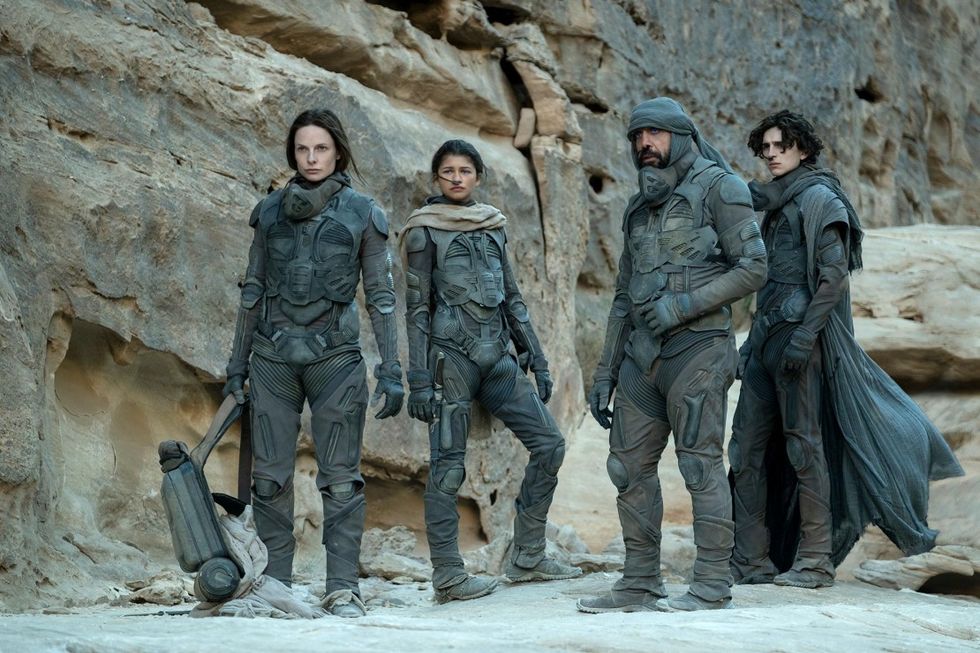
Gurney Halleck
Gurney Halleck is played by Josh Brolin in Dune (2021), and he is Duke Leto’s Warmaster, another key teacher of Paul Atreides.
The character complements his violent, ferocious nature with frequent poetry quotations from memory. In the book, Gurney plays an instrument and is something of a “warrior-bard.”
He has a violent history with the Harkonenns, and has revenge on his mind.
Gurney and Idaho are part of the group that helps connect Duke Leto with an important figure on Arrakis, a Fremen leader. Arguably the lynchpin to surviving on Dune.
Stilgar
Stilgar, played by Javier Bardem in Dune (2021), is the Fremen warrior and leader of Sietch Tabr that Duncan Idaho meets when he arrives on Arrakis with the advanced team.
Stilgar is the main representative of Fremen culture. His role will expand in part two. Along with...
Chani
Played by Zendaya in Dune (2021), Chani is a member of the Fremen who along with Stilgar comes into contact with Paul Atreides at a critical time in his journey.
One of the few tools of foreshadowing utilized by Denis Villeneuve in the film is the character of Chani. Paul has visions of her long before meeting her, having an inkling of both the future, but also his eventual ability to see through time and predict outcomes.
Which begs some other questions we’re now ready to answer.
Dune Terminology
So what about Paul’s powers, anyway? What is he, exactly? Trained as a Bene Gesserit? A Mentat? A swordsman? All three… but also something more.
Something he can only be because of Arrakis.
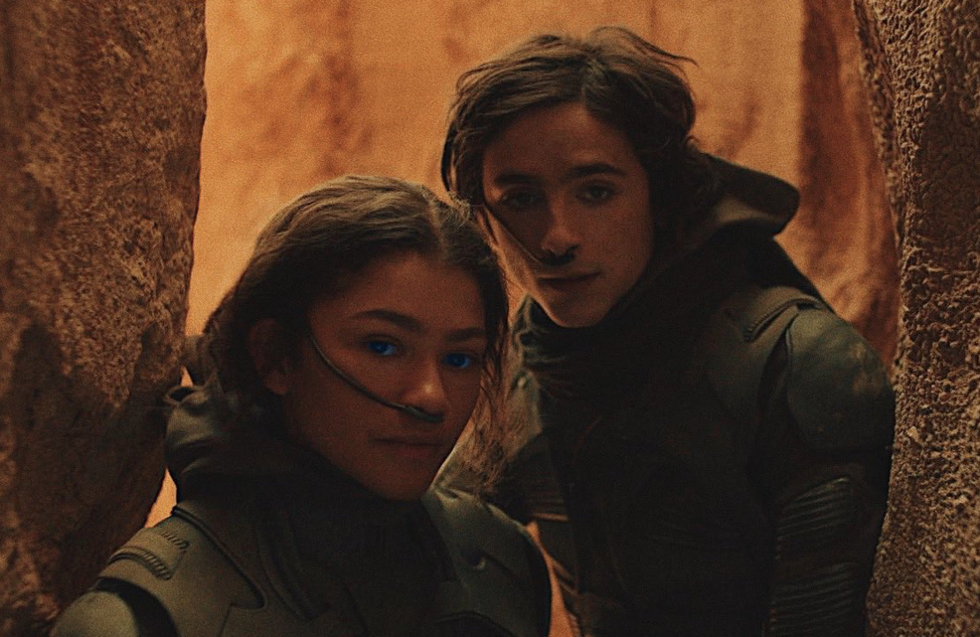
Dune Spice
The spice on Dune is not just like spice in the sense of food as we know it.
The spice melange on Arrakis is basically crude oil. It’s a key to providing the ability to travel in space, but it’s also highly addictive, and mind-altering. It’s crude oil plus LSD plus caffeine.
Arrakis is a planet being ravaged for a highly addictive and highly valuable product.
The spice in Dune allows for space travel because it has a direct impact on the mind. It’s in the food and air all around Arrakis, and it is responsible for the Dune spice eyes, or entirely blue eyes of the natives and long-time residents of Arrakis.
The Dune spice heightens Paul’s instincts and powers, leading him to become something more than just a Bene Gesserit.
It’s almost like Paul was a perfect storm of incidents that would allow for someone to believe in a real-life demigod, which is also part of the story’s commentary.
If you’re wondering how spice helps space travel, then that leads right into the spacing guild.
The guild navigators use the spice to allow themselves to bend space and time and travel great distances. We don’t see these navigators in Dune (2021), and they barely appear in the book at all.
We do, however, see them early on in Dune (1984). And they are weird.
Dune Spacing Guild
The spacing guild in Dune is the organization that allows for interstellar travel. So unlike many other science fiction stories, Dune does not have multiple people allowed to travel planet-to-planet. It is rather something you have to hire the spacing guild for, giving them immense power.
But—remember what we said about spice?
The spacing guild is entirely dependent on it. This means it’s impossible for the universe to function as it should without control over Arrakis’ oh-so-valuable resource.
Now you see that Arrakis’ dream of being something different is quite challenging to achieve, since humanity’s entire strength is organized around continuing to exploit it as a barren landscape of spice production.
There are a few other massive powers depending on this, and interlocking with the spacing guild. Like—
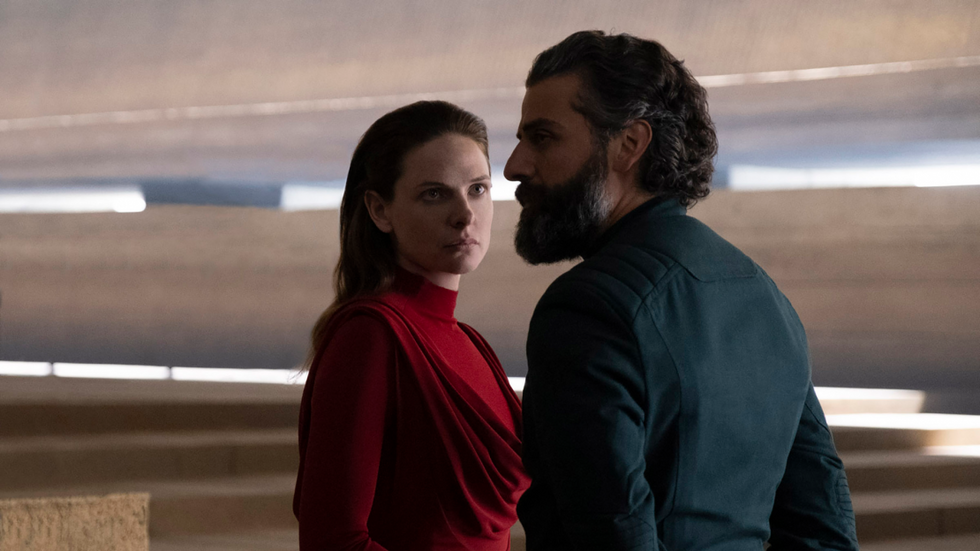
CHOAM
CHOAM is an acronym for Combine Honnete Ober Advancer Mercantiles, a company that effectively controls the economy in the Dune universe. The CHOAM company uses the spacing guild to transport goods and services.
If CHOAM and the spacing guild control the economy, who wields political power?
Padishah Emperor Shaddam IV
You won’t see him in Dune (2021), though he was in David Lynch’s Dune (1984). The Padishah Emperor Shaddam IV is the primary ruler of the known universe at the time of the events in Dune.
While there are the major Houses, the Padishah Emperor rules. His jealousy of House Atreides is part of what brings him in alignment with House Harkonnen to set the trap.
He is also very dangerous because he has at his disposal the use of a powerful elite army known as—
The Sardauker
The Sardaukar are the military force ready to show up and defend the will of the Padishah Emperor. Cruel, ruthless, and hailing from a prison planet of Salusa Secondus, they are sort of like a Roman Praetorian Guard.
So does anyone keep this powerful emperor with his elite personal army at bay? Kind of.
Landsraad
The Landsraad is the body formed by the major houses that gathers as a council. If united against the Padishah Emperor and his Sardaukar, they could in theory win.
But uniting the Landsraad is not likely.
Plus, there is yet another powerful force in the Dune universe. While we have covered the economic powers (CHOAM, the Spacing Guild), the political powers (Emperor Padishah and Landsraad), and even the ecological protagonist with its own dream (Arrakis), we have yet to dig into and define how religion fits into this.
Bene Gesserit
The Bene Gesserit are a quasi-religious sisterhood of women with elite combat abilities, psychological skills, and mental powers. They employ all this to wield political power and influence the course of history. They are also referred to as Dune witches.
Bene Gesserit pronunciation is indicated here:
The Bene Gesserit have their own long game—genetically engineering through arranged couplings the birth and ascension of the Kwisatz Haderach.
The Bene Gesserit are led by a Reverend Mother who has undergone a spice ritual allowing them greater vision into past and future events. They also have multiple powers and abilities that allow them to take advantage of others.
The Weirding Way
The Bene Gesserit are among the universes’ most elite in hand-to-hand combat, as evidenced by both the Lady Jessica and Paul as he learns from her. On Dune, the weirding way is what other characters refer to when they witness this particular fighting style.
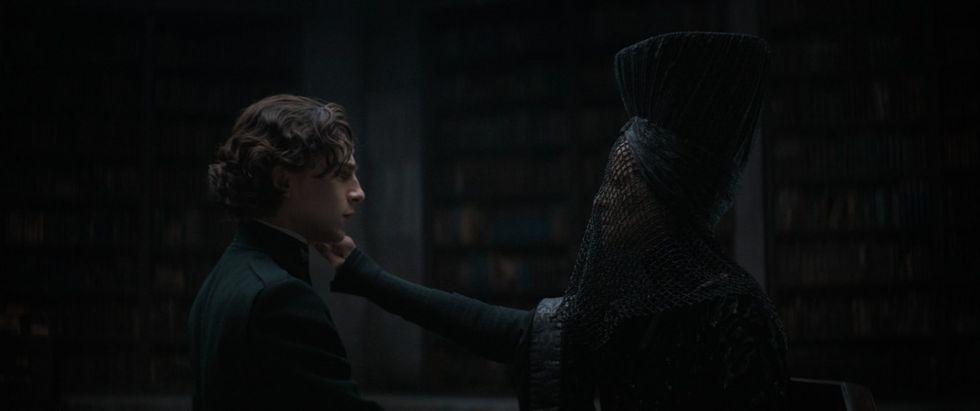
The Voice
The voice is the ability of the Bene Gesserit to use certain intonations to issue vocal commands to other beings. Yep—it’s the original Jedi mind trick.
In Dune, the Bene Gesserit are mysterious and dangerous, using their power and their aforementioned Missionaria Protectiva to sway peoples and cultures towards their will.
They are an example of religion taking advantage of its ability to create faith, and create fanatics.
Like Paul Atreides and so many aspects of Dune, Bene Gesserit are complex. They fall into a gray area away from pure good or evil. There are aspects of their training involved that stand apart for the audience and characters, but if you aren’t aware of it at first watch you might miss it in the film completely.
The Bene Gesserit Litany Against Fear
The Bene Gesserit litany against fear is as follows:
“I must not fear
Fear is the mind-killer
Fear is the little-death that brings total obliteration
I will face my fear
I will permit it to pass over me and through me
And when it has gone past, I will turn the inner eye to see its path
Where the fear has gone there will be nothing. Only I will remain.”
You might also hear about it as the "fear is the mind-killer" Dune quote. It is one of the more memorable aspects of the story, akin to, “Use the Force, Luke,” or, “Do you want the red pill or the blue pill?” in The Matrix.
In Denis Villeneuve’s Dune, you aren’t able to read the litany against fear repeatedly, having it become part of your conscious experience while the characters utilize it to face down challenging obstacles.
Instead, Villeneuve has the characters recite it, but in said sequences, it might be hard to make out or understand what exactly the characters are saying and why.
Paul uses this tool and technique throughout the story.
Now we know how Dune expertly weaves a plot involving a classic hero’s journey into something far more complex. A statement of POV about exploiting an ecological system for political and economical gain and how a religious practice comes into play almost by accident leading to—
Nope. We’re not going to spoil all that! But there is something we’re forgetting, right? Something big. Something else about Dune…
Hmm. What could it be?
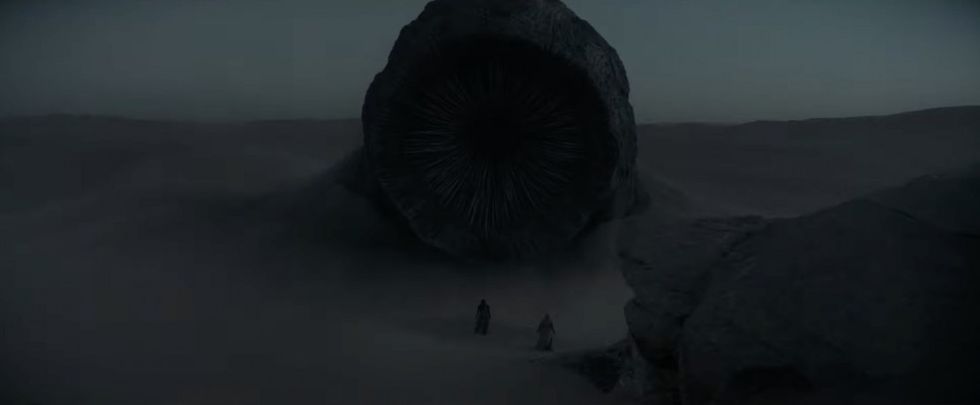
Dune Sandworm
The Sandworm, sometimes known as the Maker or Shai-Hulud, is a massive, dangerous creature that roams the endless deserts of Arrakis. The Sandworms are a part of the process that creates the spice, but they are also the greatest threat to spice harvesting, taking down the massive machines used to harvest it, and killing all those in their paths.
The Dune Worm is effectively the Dune monster. It’s the “dragon guarding the treasure.” It’s the legendary creature that must be slain, defeated, or tamed. Dune Sandworm size varies, but the large ones get up to 450 meters long.
David Lynch’s 1984 interpretation of the Dune Sandworm is quite different than Denis Villeneuve’s, who wanted to give them a different and more prehistoric look.
The Arrakian Sandworm is a constant threat to everything and everyone.
Or is it?
Fremen
The Fremen are the humans living on Dune in the deepest parts of the desert, learning to contend with and thrive on the parched, waterless, Sandworm-infested environs using complex tools they have developed, and specific methods of survival.
The Fremen are the key to Arrakis. Duke Leto Atreides knows this, which is why he’d sent his best fighter Duncan Idaho ahead to meet them.
The Dune Fremen have a few characteristics. They are always wearing their stillsuits, and they have Fremen eyes, or the Dune spice eyes of light blue.
They are the natives, and one could make the case that just as in stories of the British Empire colonizing the Middle East, or the cowboys and settlers colonizing the American West, there are those who get to know, love, and appreciate the native culture.
Like Doctor Kynes, or Duncan Idaho. They are said to have “gone native,” which is a motif in and of itself, opening Dune and other similar stories up to the White Savior trope.
But Dune is, arguably, quite the opposite.
Remember Herbert said Arrakis is a planet afflicted by a hero…
In another twist of brilliant storytelling, Villeneuve and Herbert in-kind use Paul’s prep for his time on Arrakis as a chance to prep us, the audience, on the mysterious Fremen culture. We learn little tidbits. How they survive there, what they do. Then later, we see these little lessons put to use. A story tool called plant and payoff.
The Fremen have a weakness, because despite being able to survive the desert and even control the power of the Dune Sandworms, they are infected by the Missionaria Protectiva.
This means they are under the influence of the seeds of prophecy and fanaticism planted long ago but the Bene Gesserit.
The Fremen survive by wearing the stillsuit, or the Fremen stillsuit. It’s a complex wetsuit-type thing that allows for the water and moisture in a human body to be recycled into drinking water.
It is the only way they can survive the desert, and it’s why everyone on Arrakis eventually has those little nose plugs.
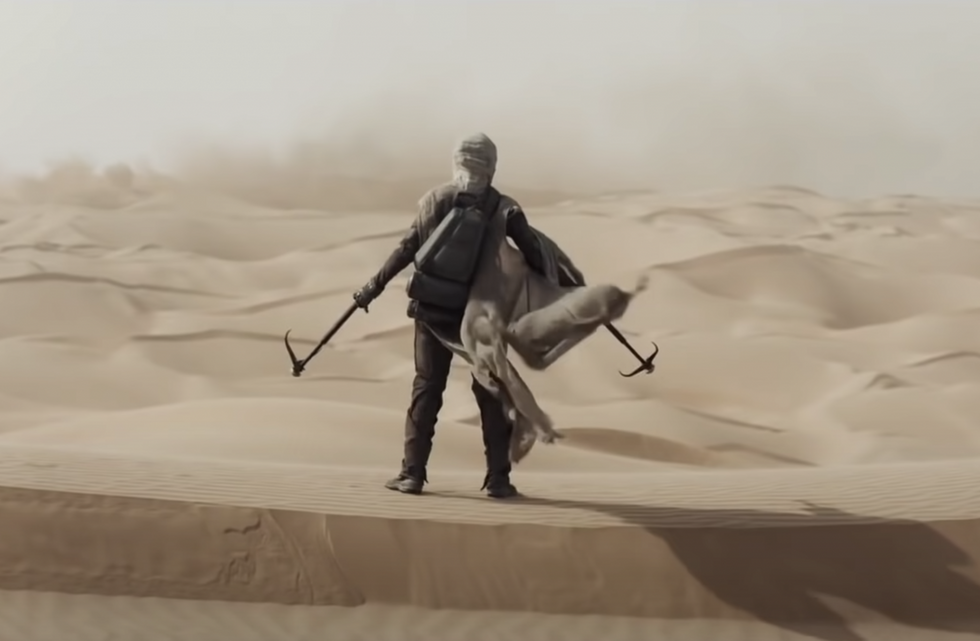
Dune Summary and Dune Book Summary
We can now summarize all that we now know and provide a full Dune synopsis. Spoiler alert!
Dune takes place in 10,191, when human beings have colonized a vast universe and found themselves in a feudal system that depends on the production of a powerful mind-altering substance known as the Spice Melange.
The spice is found only on the barren world of Arrakis.
The story is seen through the eyes of 15-year-old Paul Atreides, a young noble and son of the beloved Duke Leto Atreides of Caladan. Duke Leto and his army have grown in power and popularity, enough to threaten the Padishah Emperor Shaddam IV who conspires with Duke Leto’s arch-rival Baron Vladimir Harkonnen.
Their plan is to grant House Atreides control of the all-important planet Arrakis. The noose tightens when the Harkonnens leave the planet in disrepair, and it’s revealed that they have an inside man, Dr. Yueh, ready to betray House Atreides.
Yueh turns on the Duke, having been bribed by Baron Harkonnen, leaving House Atreides exposed. But Yueh does leave Duke Leto with a counter-plot—a poisonous tooth he can crack open to kill the brutal Baron Vladimir Harkonnen with the Duke’s final breath.
Paul and his mother Lady Jessica, a member of the Bene Gesserit order of witches, escape from the Harkonnen capture, utilizing the Bene Gesserit training she has provided him against the wishes of her order.
They need the aid of House Atreides Swordmaster Duncan Idaho, who established contact with the native Fremen of Arrakis and their leader, Dr. Liet Kynes.
Baron Harkonnen double-crosses Yueh, killing him, and Duke Leto utilizes the poison, killing himself and members of the Baron’s entourage, but failing to kill him. Kynes and Idaho die defending Paul and Lady Jessica, who escape again into the hostile desert.
They barely survive the desert using what Paul has learned from studying the planet prior to arrival. Lady Jessica and Paul find their way into the hands of a Fremen Sietch, or tribe, led by Stilgar. Paul has seen this future in his dreams, in particular a girl who accompanies Stilgar named Chani.
The first Denis Villeneuve movie ends here.
The Dune book goes on to show Paul and his mother living among the Fremen Tribe while the Harkonnens take an even more punishing approach to exploiting the spice of Arrakis.
Paul rises in power within the Fremen world, through a variety of rituals and conflicts. It becomes clear to them that he is their Lisan al Gaib, a messiah or prophet figure. Jessica and Paul know this was a plant by the Bene Gesserit as part of their Missionaria Protectiva.
Paul’s visions and powers grow. He senses in them something dangerous… what he refers to as a "terrible purpose," but he’s unclear on how it will manifest. It seems his role as a messiah and Kwisatz Haderach could lead to a galaxy-wide jihad.
As Paul and his mother become part of the Sietch of Fremen, Gurney Halleck finds life after loyal service to the fallen house Atreides as a spice smuggler.
Thufir Hawat, once the Atreides Mentat, is now in service of Vladimir Harkonnen.
Baron Harkonnen entrusts the spice production to his nephew Rabban, while having his other nephew Feyd Rautha groomed to take over as Baron, maybe even emperor.
Paul’s powers rise, and his mother the Lady Jessica undergoes a process of initiation among the Fremen. Paul and his mother drink the water of life, a highly powerful spice melange concoction, turning her into the Reverend Mother of the Fremen, and him into an even more supercharged version of the Kwisatz Harderach.
At the same time, the powerful drug impacts her yet unborn child, also from the late Duke Leto, making her also a part of the legacy of consciousness of the Reverend Mothers.
Paul trains to ride the sandworms with Stilgar, becoming a full Fremen leader in his own right. Instead of challenging Stilgar, his friend, for leadership of the Seitch and the Fremen tribes, Paul instead makes it clear Stilgar will be at his side, as they launch a full-scale attack on the Harkonnens, reclaiming the planet Arrakis.
They reunite with Gurney Halleck, who after all this time still suspects Lady Jessica of betraying Duke Leto and House Atreides. He learns it was Dr. Yueh, and joins Stilgar and Paul at the lead of the attack.
By now, Chani has borne Paul a son, Leto II. The Padishah Emperor arrives on Dune along with members of the Spacing Guild and the violent Sarduakr army, to ensure that the Fremen uprising ends.
Paul and his Freman army win a decisive battle. He loses his son in the process, but defeats Feyd Ruatha in a one-on-one battle to the death, then out-maneuvers the Padishah Emperor and the Spacing Guild by threatening to destroy all the spice on Arrakis.
He takes the Emperor’s daughter Princess Irulan as his official bride, promising he will stay in love with his concubine Chani regardless, and he takes the mantle as emperor of the known universe.

Dune Ending and Dune Analysis
The end of Dune (2021) is, in the words of Chani, “just a beginning.” Paul is about to embark on his true purpose.
The end of the book is different, as covered in the Dune summary and synopsis. The end of the book leaves things seemingly neatly wrapped up, having completed a near-perfect story circle in the Joseph Cambell-monocytic sense.
However, there are tons of loose ends if you look closely.
Herbert had this intent, hoping a reader who finishes the book then feels compelled to go back into it. You could walk away from Dune with many interpretations.
There is how it treats notions of religion, economics, leadership, family, politics, even ecology.
Dune is also a classic heroe's quest. Paul starts as a young man, in a certain kind of world. He crosses a threshold into another upside-down adventure world, he has an apotheosis and becomes, in the end, a literal master of both worlds.
Dune is the story, as we’ve mentioned before, of the Planet Arrakis "afflicted by a hero," in Herbert’s words.
Were it not for the Missionaria Protectiva of the Bene Gesserit, Paul would not have been hailed as a messiah. The world of Dune might have plodded along to its eventual goal of reaching greenery, and a future without the spice dominating its existence.
The ideas of the land exploited by Western forces, a native people attempting to live in harmony with their world fighting back, are all familiar tropes with historical precedence around the world.
Dune could be looked at a number of ways, and Dune literary analysis is a field unto itself. What makes a truly great story is one where the puzzle pieces fit together, from plot to character the theme to perspective all aligned with intent.
Is Dune a good book?
Of course. It can be much more than that, though. It can be a blueprint for telling a compelling story, with intricate worldbuilding, that carries with it a meaning and goal from its creator. It plants in the often barren desert of pop culture seeds that could grow into ideas and movements, that could change how people view the world, past, present, and future.
Dune is an epic book and movie, but also a mirror held up to western civilization, revealing things many continue to refuse to see.

 No Film School's coverage of
No Film School's coverage of 









